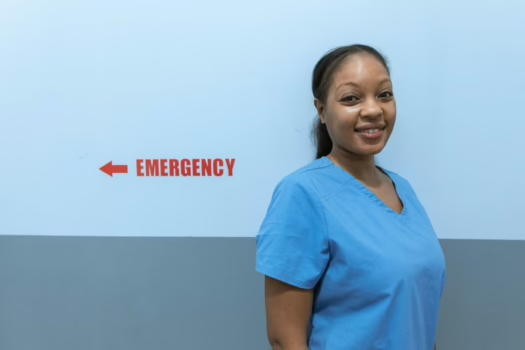Have you ever been in a hospital room and noticed who actually makes everything run? It’s not just the doctors popping in and out with charts. It’s the nurse who checks on you every hour. The one who catches that odd reading on your monitor. The one who explains the plan in real words. Nurses are everywhere. And more than ever, they’re leading the charge toward better health for all of us.
We often think of nurses as helpers. But that’s only part of the story. Nurses are educators, advocates, leaders, and innovators. They hold knowledge and instincts built from years on the floor, in clinics, and beside patients. And they’re bringing all that experience into new spaces—policy, research, and high-level decision-making.
Healthcare is changing fast. Technology is taking over some tasks. Populations are aging. Mental health is finally being taken seriously. The system needs smart, adaptable professionals. And today’s nurses are stepping up in ways that go far beyond traditional roles.
In this blog, we will share how nurses are shaping the future of healthcare, what trends are pushing them forward, and how advanced learning is opening new doors in the profession.
Leading From the Bedside and Beyond
When a nurse catches a mistake in a prescription, that’s leadership. When a nurse sits down with a patient to walk through discharge plans, that’s leadership too. But leadership doesn’t always wear a title. It’s often quiet, steady, and built on trust. Still, more nurses are finding ways to lead in visible, system-wide ways—and education is a big part of that shift.
A growing number of nurses are pursuing options like an RN to MSN program online, which allows them to keep working while expanding their skills and credentials. These programs provide more than clinical knowledge. They build leadership skills, sharpen communication, and dive into data, ethics, and healthcare systems.
And because the programs are online, they fit into a nurse’s life—no need to pause work or relocate. That flexibility matters. Nurses are busy. Their work schedules change. Their lives don’t stop for school. Online programs make advanced education possible, not just ideal.
This kind of learning also reflects the future of healthcare itself—digital, adaptive, and deeply integrated into daily life. Nurses who train in that environment are better prepared for the world they’ll serve.
Seeing the Whole Picture
Healthcare doesn’t just happen in hospitals. It happens in homes, schools, community centers, and correctional facilities. It happens when someone decides to go to a clinic or skips it because they can’t afford to miss work. Nurses see those realities. They don’t just treat symptoms—they see the people behind them.
This view matters more than ever. Social issues—like housing, food insecurity, and lack of transportation—show up in exam rooms. If a patient keeps missing appointments, it’s not always about motivation. It might be about a bus route or unpaid time off.
Today’s nurses understand this bigger picture. Many are working with community partners, nonprofits, and public health departments to meet people where they are. They organize health fairs, lead education workshops, and create outreach programs in hard-to-reach areas.
When health systems ignore these root causes, people fall through the cracks. But when nurses are part of planning and policy, those cracks start to close.
Technology Is a Tool, Not a Replacement
Walk into a modern hospital and you’ll see monitors everywhere. There are alerts, digital charts, and automated reminders. Technology saves time, it reduces error but it also creates new challenges.
Data is only as good as the person interpreting it. Nurses bring context to numbers. A pulse rate spike isn’t just a stat. It’s tied to the patient who hasn’t slept in two nights. Or the parent worrying over a child’s test results.
Nurses are also helping shape how new tools are used. They test digital chart systems. They train teams on how to use new software. They advocate for patient-centered design in tech tools.
The best technology doesn’t replace the human touch—it strengthens it. And nurses are often the bridge between machines and meaning.
Training the Next Generation
There’s a shortage of nurses. But there’s also a shortage of nurse educators. As the workforce ages, schools are scrambling to train replacements. And it’s the nurses already in the field who are stepping up to teach.
Many experienced nurses are moving into education, mentoring, and preceptorship roles. They’re guiding students through their first IV insertions, their first difficult conversations, and their first 12-hour shifts.
This matters deeply. Because nursing isn’t just knowledge—it’s judgment, empathy, and grit. And those things are best taught by those who’ve lived it.
Online learning also plays a role here. Many nursing programs now blend virtual content with real-world experience. That opens more spots, especially for students in rural or underserved areas. It creates access where brick-and-mortar programs can’t reach.
Policy, Advocacy, and Big-Picture Thinking
Nurses have always been close to the patient experience. But now, more are stepping into rooms where big decisions happen. They’re joining hospital boards. They’re advising legislators. They’re writing health policies.
This shift isn’t accidental. It’s intentional — and overdue.
When nurses speak, they bring insight grounded in daily practice. They know what happens when paperwork is unclear, when a process doesn’t work, or when a protocol puts safety at risk.
The pandemic brought this into sharp focus. Nurses were on the frontlines, making critical choices with limited resources. Many used that experience to push for better preparedness, stronger safety nets, and clearer communication from leadership.
Now, more nurses are adding policy credentials to their toolbox. They’re using their voices to shift how healthcare works, not just how it’s delivered.
Nurses as the Future of Care
So what does the future hold? More nurses in leadership roles. More nurses shaping strategy. More nurses teaching, innovating, and building health systems that work for everyone.
But it takes investment. It takes support. And it takes recognizing that nurses aren’t just part of the system—they’re architects of its future.
When we invest in nurses, we’re not just filling shifts. We’re building stronger care, smarter systems, and more responsive leadership. We’re creating healthcare that listens, adapts, and cares deeply.
And at the center of that movement? Today’s nurses—shaping tomorrow’s outcomes, one decision, one patient, and one bold step forward at a time.
Follow me down the rabbit hole!
I'm Alice and I live with a dizzying assortment of invisible disabilities, including ADHD and fibromyalgia. I write to raise awareness and end the stigma surrounding mental and chronic illnesses of all kinds.








